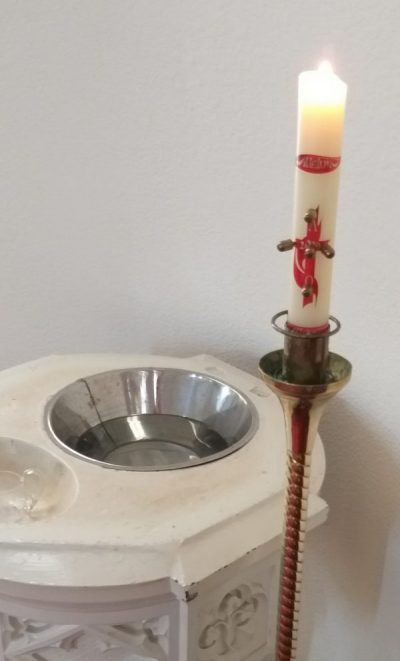Executive Officer’s report: April 2019
There was something eschatological about a fire devastating Paris’ Notre-Dame Cathedral in Holy Week.
Eschatology is theologising on the end of time(s). The fire could be seen as an eschatological symbol of:
- the dying dream of a united and inclusive Europe which seems to be mortally wounded by the rise of far right politics and Brexit; and/or
- the previously dominant US-European order being overtaken by the rise of China and India; and/or
- the dominant Christian worldview being swept away by a tide of secularism; and/or
- the demise of Catholic leaders/structures/prestige from sex abuse crisis/calls for reform.
Even before the flames had been put out, the French President announced that the Cathedral would be rebuilt. There was a rush to restore all to what it was before the fire. I won’t comment on the merits or otherwise of rebuilding Notre-Dame. However, I am drawn to reflect upon what the Easter story has to say about situations like the Notre-Dame fire.
The Gospels give us a picture of the disciples having great difficulty letting go of their hoped-for expectation of Jesus’ future. For the most part, they only gradually come to see, and experience, the Resurrected Jesus. At times, this is because they do not immediately recognise His new life (Jn 20:11-18; Lk 24:13-21; Jn 21:1-13).
The Easter message says to me that after a death/experience of finality we need to keep our eyes and minds open to new manifestations of life. For the Church in Australia, this is an invitation to look for, and nurture, the signs of God’s creative Spirit bringing forth new life. It could be that you are working against God if you nostalgically try to recreate what once was without any discernment about its current relevance.
One example of this ‘life from death’ is the potential for improved safeguarding processes to bring about a more accountable, transparent and participatory Church. This was certainly the message I took away from my attendance at the 03 April 2019 CPSL National Catholic Safeguarding Standards Introductory Session for Leaders.
As Pope Francis said in his ‘Letter to the People of God’ (20 August 2018):
“It is impossible to think of a conversion of our activity as a Church that does not include the active participation of all the members of God’s People. Indeed, whenever we have tried to replace, or silence, or ignore the People of God to small elites, we end up creating communities, projects, theological approaches, spiritualities and structures without roots, without memory, without faces, without bodies and ultimately, without lives.…”
This is not just a challenge to diocese and parishes. Ministerial PJPs, and their Trustees, must continually assess whether they should be better connected, more open and more accountable, not just to their Members, but also to the Boards that report to them and ultimately to their students, patients, clients and service users.
Photo of Notre Dame fire courtesy of Twitter: @AmichaiStein1
 Prayer from the Gospel readings of the Easter season
Prayer from the Gospel readings of the Easter season
When we struggle to see new possibilities: Holy Spirit bring new life.
When we fail to recognise you: Holy Spirit bring new life.
When we doubt your presence: Holy Spirit bring new life.
When your gifts overwhelm us: Holy Spirit bring new life.
When you take us where we do not wish to go: Holy Spirit bring new life.
When we hear your voice and seek to follow you: Holy Spirit bring new life.
When you offer us your presence in our fellow Christians: Holy Spirit bring new life.
When Christians are seen to love one another: Holy Spirit bring new life.
When you make your home in us: Holy Spirit bring new life.
When you tell us to not be afraid and to embrace your peace: Holy Spirit bring new life.
New events listed on the website:
-
- May 2019 Christian Leadership Series: Forming Disciples for Mission: A Scriptural Lens
- 16 July 2019 Decoding the Code
- 22-33 July 2019 Mary Aikenhead Ministries Conference (details updated)
- 30 Sep- 04 Oct 2019 BENet 2019 conference
- 26-28 Feb 2020 National Catholic Social Services Conference 2020
- 24 April – 06 May 2020 Holy Land pilgrimage/formation experience for senior leaders in health and education
New website content:
The public news section of the AMPJP website now has the following posts:
- A God who is love (04 April 2019 – also accessible to AMPJP General and Council members)
- Preparing for National Reconciliation Week 2019 (04 April 2019 – also accessible to AMPJP General and Council members)
- Respected leaders named to conduct Church governance review (17 April 2019 – also accessible to AMPJP General and Council members)
- New report paints picture of Australian Catholic population (17 April 2019 – also accessible to AMPJP General and Council members)
MPJP Council Members can now access the following new material in posts in the news section of the AMPJP website:
- Papers for the AMPJP Council meeting 2019-05-03 (26 April 2019 accessible only to AMPJP Council members)